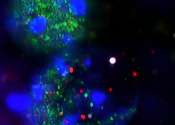E-cigarettes can damage DNA
The popularity of electronic cigarettes continues to grow worldwide, as many people view them as a safer alternative to smoking. But the long-term effects of e-cigarette usage, commonly called "vaping," are unknown. Today, ...
Aug 20, 2018
10
2418







